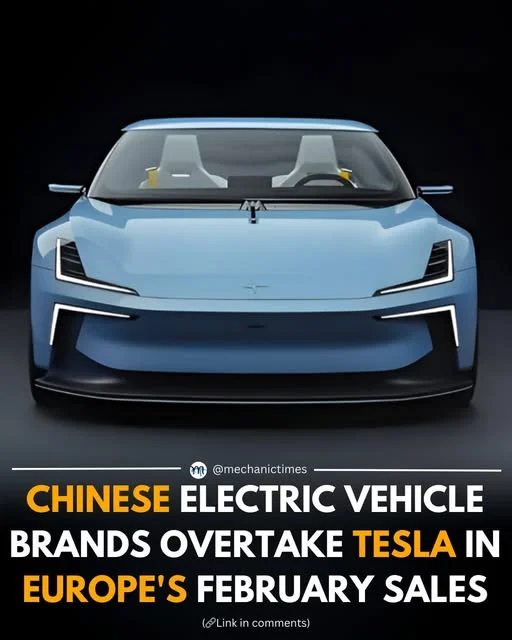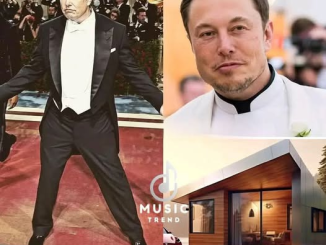
For years, Tesla has reigned as the benchmark for electric vehicle (EV) success across the globe. From the sleek Model 3 to the groundbreaking Supercharger network, Elon Musk’s brand became synonymous with the electric revolution. But February’s sales numbers from Europe have revealed something new—Tesla no longer holds the top spot.
According to data from JATO Dynamics, Chinese-owned EV brands registered 19,800 new units in Europe in February, while Tesla trailed with just 15,700 units. This represents a dramatic shift in EV market dominance, highlighting how China’s EV automakers are not just catching up—they’re surpassing the competition in key global markets.
Let’s break down what happened, why it matters, and what it signals for the future of Tesla, China, and the European EV landscape.
The Numbers That Changed the Game
In February 2025:
- Chinese EV brands registered 19,800 vehicles in Europe
- Tesla registered 15,700 units
- This marks the first time Chinese EV brands collectively outperformed Tesla in European monthly sales
A year earlier (February 2024):
- Tesla had 28,131 registrations
- Chinese brands had 23,182
This means:
- Tesla’s sales dropped by nearly 45% year-over-year
- Chinese brands also saw a decline, but only about 15%
- Relative performance clearly shifted in favor of China
The question now isn’t just why this happened—it’s why it took this long.
Who Are These Chinese EV Giants?
When we talk about “Chinese EV brands,” we’re referring to several fast-growing companies that are aggressively targeting international markets, especially Europe:
1. BYD (Build Your Dreams)
- The world’s top EV seller by volume in Q4 2024
- Offers models like the Seal, Dolphin, and Atto 3 in Europe
- Competitive pricing and strong battery tech give it a major edge
2. NIO
- Known for premium EVs and battery swapping stations
- Popular with tech-savvy and eco-conscious European buyers
- Opening flagship showrooms in cities like Berlin and Oslo
3. XPeng
- Focuses on advanced driver assistance systems and tech-first interiors
- Gaining traction with models like the P7 and G6
4. Geely (and subsidiaries like Polestar, Zeekr, and Lotus)
- Polestar is especially successful in Europe due to its Scandinavian design appeal
- Geely’s global reach (including Volvo ownership) provides solid market entry pathways
Together, these brands represent a powerful and well-funded coalition of EV players with high ambitions and deep pockets.
Why Are Chinese EVs Winning in Europe?
1. Pricing Advantage
- Chinese EVs are generally 20–30% cheaper than Tesla’s vehicles in Europe
- Brands like BYD are offering fully electric hatchbacks and sedans starting at €20,000–€25,000
- As inflation pressures persist, affordability is king
2. Wide Range of Models
- Tesla offers fewer models—primarily the Model 3, Model Y, and the high-priced S and X
- Chinese brands are rolling out a wider lineup, from compact city cars to luxury sedans and SUVs
- More variety means broader customer appeal
3. Localized Strategy
- Chinese companies are investing in local sales networks, customer service, and charging infrastructure
- Some are opening European manufacturing plants, such as BYD in Hungary
- This helps them avoid tariffs, build trust, and streamline logistics
4. Tesla’s Brand Saturation
- Tesla was once the “cool tech brand.” Now, it’s becoming mainstream or even divisive
- Issues like price volatility, autopilot controversies, and Elon Musk’s public persona have alienated some European consumers
- Meanwhile, Chinese EVs are still novel, exciting, and quietly effective
Europe: The Ultimate EV Battlefield
Why does this matter so much?
Because Europe is one of the world’s largest and most competitive EV markets, with:
- Ambitious emissions reduction targets
- Generous government subsidies for EV adoption
- Consumers who are tech-savvy, environmentally conscious, and price-sensitive
In 2025, EVs represent nearly 25–30% of all new car sales in several European countries, and cities like Oslo, Amsterdam, and Berlin are leading the global EV transition.
Whoever wins Europe, wins global influence.
Tesla’s Struggles in Europe: A Closer Look
Tesla’s decline in European sales this February wasn’t just a one-time fluke. It reflects deeper challenges:
1. Lack of New Models
- The Model 3 and Model Y are aging without dramatic design updates
- The Cybertruck isn’t yet available in Europe due to regulatory hurdles
- Chinese competitors are releasing new designs at faster intervals
2. Production vs. Demand Mismatch
- Tesla’s Berlin Gigafactory can churn out cars quickly
- But high pricing and limited model selection are softening demand
- The once-long waitlists are now being replaced by excess inventory and price cuts
3. Cultural Disconnect
- European buyers care deeply about interior design, build quality, and brand image
- Tesla’s minimalist interiors and software-first approach don’t always translate well
- Chinese brands, surprisingly, are meeting European tastes better, especially with Polestar’s design-led strategy
What This Means for the Global EV Race
Tesla’s stumble isn’t the end—it’s a wake-up call. The “Tesla vs. Legacy Automakers” narrative has evolved into a three-way battle:
- Tesla – the innovator that’s now fighting to stay ahead
- Legacy automakers – slowly catching up with offerings like the VW ID.4, BMW i4, and Renault Mégane E-Tech
- Chinese EV brands – fast-moving, well-funded, and eager to dominate
In many ways, this mirrors the smartphone wars of the 2010s. Apple (Tesla) innovated, legacy brands struggled, and Chinese brands exploded onto the scene with high-value, high-quality alternatives.
Regulatory and Trade Implications
The rise of Chinese EVs in Europe isn’t going unnoticed. European regulators are:
- Investigating alleged subsidies that allow Chinese automakers to price below market
- Debating new tariffs to protect local manufacturing
- Investing in EU battery supply chains and homegrown EV startups
But so far, consumers are speaking louder than politics. They’re choosing value and variety—and right now, China delivers that better than Tesla or Germany.
Tesla’s Path Forward in Europe
To stay competitive, Tesla will need to:
- Introduce new models tailored for the European market
- Offer more affordable trims with localized pricing strategies
- Improve build quality and interior refinement
- Reinvest in community engagement and brand loyalty programs
- Potentially open up the Supercharger network more broadly to maintain relevance
The upcoming refreshed Model 3 (“Highland”) and new compact EV expected in 2025–2026 may help turn the tide—but the clock is ticking.
Conclusion
For the first time ever, Chinese EV brands have outpaced Tesla in Europe’s monthly sales, and it’s not a blip—it’s a trend in motion.
This milestone doesn’t mean Tesla is done. But it does mark a new chapter in the EV race, where competition is broader, faster, and no longer defined by just one disruptor.
As European roads begin to fill with BYDs, NIOs, Polestars, and XPENGs, the question isn’t just whether Tesla can hold onto the crown—but whether it’s ready for a future where it’s no longer the default choice, but just one of many players in a crowded field.


